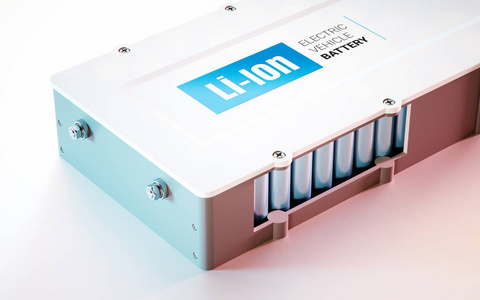
4 月 . 12, 2024 15:46 Back to list
Energy Storage: How Energy Storage Works
Energy storage plays a crucial role in the shift towards clean energy. The abundance of renewable energy sources like solar and wind power is a key component of the clean energy transition. However, these resources are intermittent, only generating electricity when the sun is shining or the wind is blowing. Energy storage addresses this issue by firming up renewable resources, maximizing their value to the grid. Additionally, energy storage can help reduce the cost of electricity by storing energy during off-peak times when it is cheapest and dispatching it during peak demand when it is most expensive. This technology also enhances the reliability of the aging electric grid that is increasingly strained by climate change-induced extreme weather events.
The importance of energy storage is particularly evident now due to the changing dynamics of power distribution. In the past, electricity flowed in a single direction from generation to transmission to distribution to the customers. However, with more customers generating their own power through sources like solar panels, power now flows in multiple directions, challenging the capabilities of the existing grid. Moreover, the grid was not designed to handle the increasing frequency of extreme weather events resulting from climate change. To secure the future of energy, it is essential to embrace energy storage technology. By accelerating the clean energy transition, reducing costs, and enhancing reliability for businesses, utilities, and communities, energy storage becomes a critical component of the modern energy landscape.
The functionality of energy storage is based on its ability to store electricity for later use, rather than relying on immediate production and consumption alignment. Traditional energy systems required electricity to be generated and consumed simultaneously, leading to inefficiencies. However, energy storage systems enable strategic charging and discharging, optimizing electricity usage. Lithium-ion batteries have emerged as the most prevalent form of energy storage technology, benefitting from their ability to hold a charge for extended periods, cost efficiency, and compact design. Similar to how batteries store power for consumer devices, commercial, industrial, and utility-scale energy storage systems can store surplus electricity from the grid and discharge it when demand peaks or prices are high. The integration of battery energy storage with solar PV further enhances the value of solar energy by storing excess electricity for use during cloudy days or after sunset.

One of the primary energy storage technologies, battery storage systems, allow for charging and discharging with grid electricity. Despite not generating power themselves, batteries play a crucial role in storing energy for later use. The effective management of when to charge and discharge a battery system is essential for maximizing its benefits. By charging during off-peak times and discharging during peak demand, battery storage systems help businesses and utilities reduce energy costs and carbon footprint simultaneously. Energy storage intelligence software, powered by artificial intelligence like ACDC's solution, plays a vital role in analyzing data to make informed decisions on charging and discharging energy storage systems for optimal performance and value creation.
Energy storage applications offer a range of benefits to organizations seeking to optimize their energy usage and costs. Coincident Peak Demand Charge Avoidance involves forecasting electric system peaks and discharging energy storage systems during those periods, reducing electricity costs and the need for additional generation. Non-Coincident Peak Demand Charge Avoidance focuses on forecasting peak usage times at facilities and dispatching energy storage systems to reduce electricity expenditure during those hours. Energy Arbitrage leverages time-dependent electricity pricing to charge storage systems during low-cost periods and discharge during high-cost periods. Solar Firming with energy storage smooths out gaps between solar energy supply and demand, enhancing the reliability of solar power. Non-Wires Alternative strategies deploy energy storage intelligently to increase grid capacity and resilience, potentially avoiding the need for costly infrastructure upgrades.
Energy storage also plays a vital role in providing additional capacity at critical times, enhancing the flexibility and reliability of the grid. Battery storage systems offer ancillary services to the electric grid, including Frequency Regulation and Operating Reserves, supporting grid stability and resilience. By incorporating energy storage solutions, organizations can create a smarter, more flexible, and reliable grid, essential for transitioning towards a clean energy future. With multiple applications for energy storage, ranging from peak demand charge management to capacity augmentation and ancillary services provision, this technology offers a versatile and valuable tool for customers and grid operators alike. As society moves away from fossil fuels, embracing both short- and long-duration energy storage solutions is crucial for a sustainable energy transition.
In conclusion, energy storage is the linchpin of the clean energy future, offering numerous benefits to organizations, utilities, and communities. As the dynamics of energy generation and distribution evolve, energy storage technologies are pivotal in optimizing energy usage, reducing costs, and enhancing grid reliability. By leveraging energy storage solutions, businesses can navigate peak demand challenges, mitigate electricity costs, and contribute to a more sustainable energy landscape. Embracing battery storage and other energy storage technologies is essential for accelerating the clean energy transition and ensuring a resilient and efficient energy system for the future. To further promote the adoption of energy storage, policymakers and market stakeholders must provide equal treatment and support for these technologies, fostering innovation and driving the transition towards a cleaner and more sustainable energy ecosystem.
-
Unraveling the Power of EMS Energy Management Systems
NewsOct.23,2024
-
Unleashing the Potential of Power System Management and Smart Energy Solutions
NewsOct.23,2024
-
Smart Energy Mastery: Unleashing the Power of Controls
NewsOct.23,2024
-
Smart Energy Management: Unleashing the Power of Energy Management Systems and BMS Energy
NewsOct.23,2024
-
Powering Progress: ADMS, Intelligent Management & More
NewsOct.23,2024
-
Energizing the Future: Devices, Smart Management & Savings
NewsOct.23,2024


